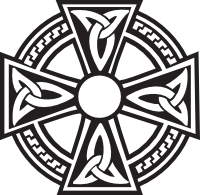Iconoclasm and the Seventh Ecumenical Council: The Council of Councils
[cmsms_row data_padding_bottom=”50″ data_padding_top=”0″ data_overlay_opacity=”50″ data_color_overlay=”#000000″ data_bg_parallax_ratio=”0.5″ data_bg_size=”cover” data_bg_attachment=”scroll” data_bg_repeat=”no-repeat” data_bg_position=”top center” data_bg_color=”#ffffff” data_color=”default” data_padding_right=”3″ data_padding_left=”3″ data_width=”boxed”][cmsms_column data_width=”1/1″][cmsms_text animation_delay=”0″]
The seventh and last Ecumenical council held in Nicaea in 787, upheld the veneration of icon’s and instituted that relics be placed in the antimins cloth. This is the final Ecumenical Council recognized by the Orthodox Church, and has an honoured place among the seven councils. Its uniqueness is shown in that it is not included in the commemoration of the first six councils which are grouped together and commemorated in the Orthodox Church calendar on the Sunday between July 13 and 19, but has its own date (Oct. 11) in the Church calendar. While there were many issues at play leading up to the calling of this council and continuing afterwards until the establishment of the “Triumph of Orthodoxy” in 843, the Christological significance of this council is the key to understanding its’ importance.
Some historians would state that the cause for the iconoclastic battle and ensuing bloodbath was simply political ambition, and a huge political struggle it certainly was. However, in this short essay I will attempt to show that while a bloody 117 year long battle (726-843 with relative peace between 787 and 814) was occurring, the theological issues at stake were the true cause of the battle. The Church’s’ understanding of our very salvation and eternal citizenship in the kingdom of heaven was at stake, as the nature of Christ and of what this understanding means to mankind was confirmed during this iconoclastic period. Foundational theology regarding man’s destiny in Christ (Theosis) was being defined. This understanding would be critical to works on this issue in later centuries by saints such as St. Symeon the New Theologian (who three centuries later would have his formation in St. Theodore’s Monastery of Studios in Constantinople) and St. Gregory Palamas. A couple of representative quotes from St John of Damascus illustrate this “By union with His person, that flesh participates in the divine nature and by this communion becomes unchangeably God” and “For I have seen God in human form, and my soul has been saved.” The lingering errors of subtle Origenian thinking, as well as many of the more obvious heresies were being dealt a final blow through the development of the theology of icons.
[/cmsms_text][/cmsms_column][/cmsms_row]
